28 Faults
Elizabeth Johnson
Anatomy of a Fault
Faults are the places in the crust where brittle deformation occurs as two blocks of rocks move relative to one another. The plane along which motion occurs is called the fault plane. If it is visible at the surface, it is called a fault scarp (Figure 13).
Normal and reverse faults display vertical, also known as dip-slip, motion. Dip-slip motion consists of relative up-and-down movement along a dipping fault between two blocks, the hanging wall and footwall. In a dip-slip system, the footwall is below the fault plane and the hanging wall is above the fault plane. A good way to remember this is to imagine a mine tunnel running along a fault; the hanging wall would be where a miner would hang a lantern and the footwall would be at the miner’s feet.
Figure 13 (Click on link): Hanging wall, footwall, and scarp of a normal fault. https://skfb.ly/6A7xJ
Types oF Faults
There are three main types of faults: normal faults, reverse faults, and transform or strike-slip faults.
Normal Faults
In normal faults, the hanging wall moves downward relative to the footwall (Figure 13 and Figure 14). This motion can be determined by tracing the offset of the beds in a vertical motion in a block diagram. In map view, the hanging wall rocks will be younger than the footwall rocks, due to erosion of the uplifted side.
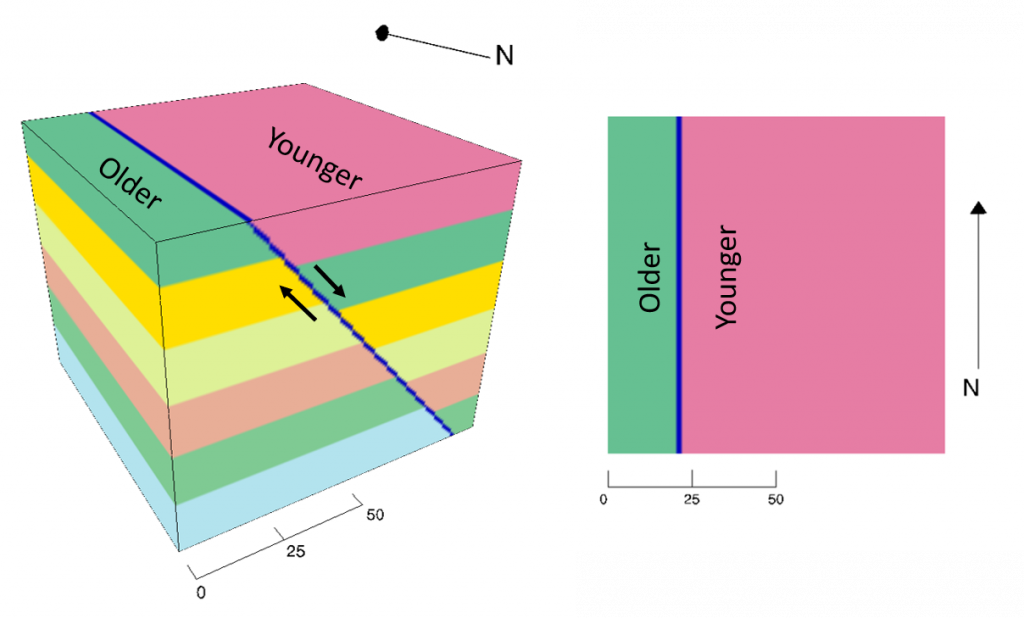
3D interactive model of Figure 14: http://app.visiblegeology.com/model.html#ahFzfnZpc2libGUtZ2VvbG9neXIPCxIFTW9kZWwYiZKSowEM
Reverse Faults
In reverse faults, the hanging wall moves upwards relative to the footwall. This motion can be determined by tracing the offset of the beds in a vertical motion in a block diagram. In map view, the hanging wall rocks will be older than the footwall rocks, due to erosion of the uplifted side (Figure 15).

3D interactive model of Figure 15: http://app.visiblegeology.com/model.html#ahFzfnZpc2libGUtZ2VvbG9neXIPCxIFTW9kZWwY6b-logEM
A reverse fault that has a shallowly dipping fault plane (perhaps less than about 45 degrees) is called a thrust fault (Figure 16).
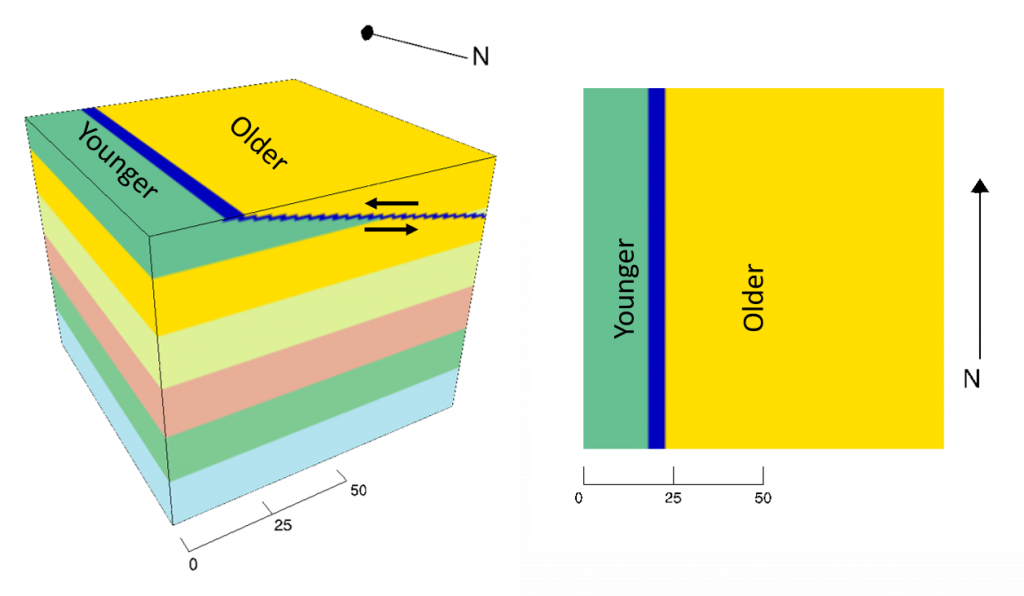
3D interactive model of Figure 16: http://app.visiblegeology.com/model.html#ahFzfnZpc2libGUtZ2VvbG9neXIPCxIFTW9kZWwYmeCSowEM
Transform or Strike-slip Faults
In transform or strike-slip faults, one block moves laterally relative to the other block – it does not matter which one is the hanging wall or footwall. The fault plane can be vertical or at an angle (Figures 17 and 18).
Imagine you are standing on one side of a transform fault looking across the fault to a friend on the other side. In a left-lateral transform fault, your friend on the opposite block moves towards your left. In a right-lateral transform fault, your friend on the opposite block moves towards your right. This is true no matter which block you are standing on, because it is relative motion! Sometimes, transform faults will be marked with the relative motion directions on either side of the fault (Figures 17 and 18).
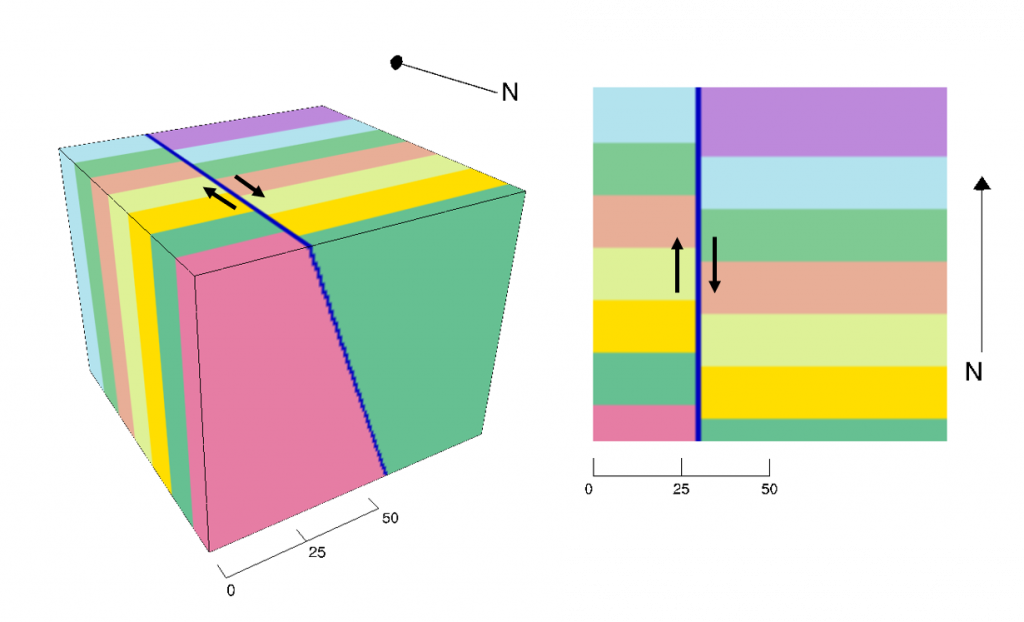
3D interactive model of Figure 17: http://app.visiblegeology.com/model.html#ahFzfnZpc2libGUtZ2VvbG9neXIPCxIFTW9kZWwYqunKmAEM
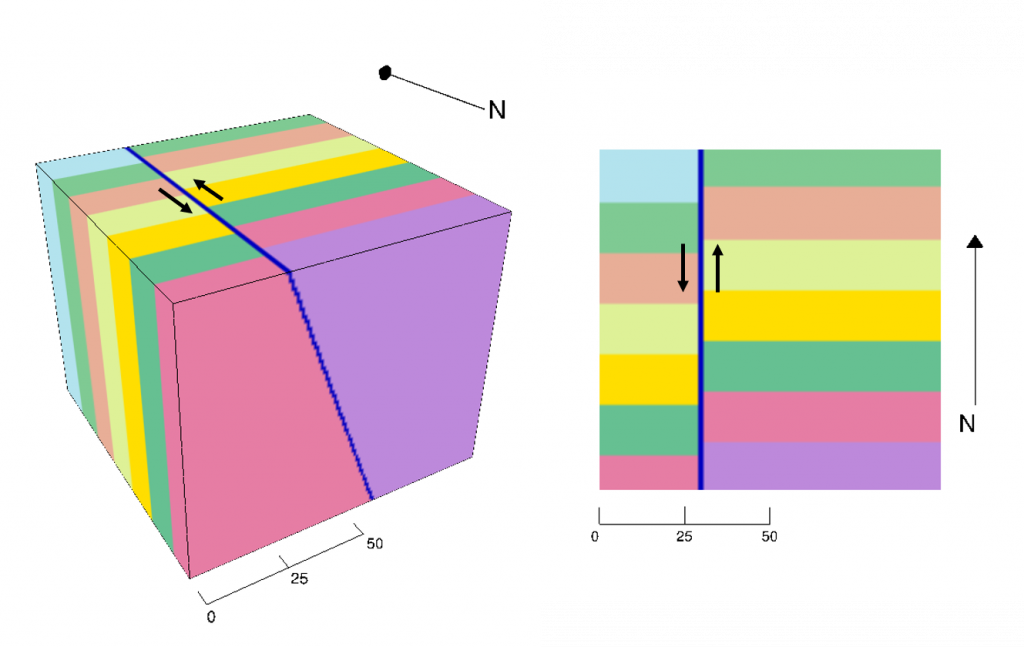
3D interactive model of Figure 18: http://app.visiblegeology.com/model.html#ahFzfnZpc2libGUtZ2VvbG9neXIPCxIFTW9kZWwYubfLmAEM
Questions

3D interactive model of Figure 19: http://app.visiblegeology.com/model.html#ahFzfnZpc2libGUtZ2VvbG9neXIPCxIFTW9kZWwYurfLmAEM
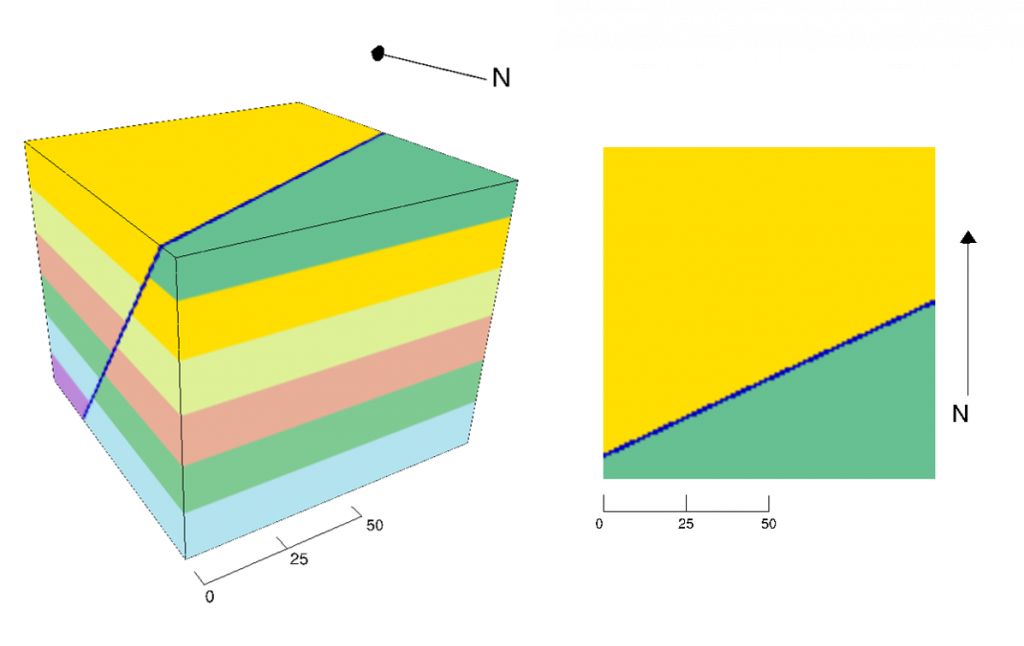
3D interactive model of Figure 20: http://app.visiblegeology.com/model.html#ahFzfnZpc2libGUtZ2VvbG9neXIPCxIFTW9kZWwYqenKmAEM
Question 8: What type of fault is shown in Figure 20?
- Normal
- Reverse
- Right Lateral Transform
- Left Lateral Transform
Question 9. What type of fault is this (from the Corinth Canal, Greece)? Hint: Look at the dark brown layer. https://skfb.ly/6tTnT
- Normal
- Reverse
- Right Lateral Transform
- Left Lateral Transform
References
Text modified from http://opengeology.org/textbook/9-crustal-deformation-and-earthquakes/ CC-BY-SA.

